URAL Motorcycles TOURIST Owner's manual
- Category
- Motorcycles
- Type
- Owner's manual
This manual is also suitable for

1
URAL Classic Motorcycles
Owner’s Manual
2002 Models (All States)
BC-75 (Bavarian Classic)
LC-75 (Luxury Cruiser)
Tourist, Adirondac & Patrol
Classic Motorcycles & Sidecars, Inc.
P.O. Box 969
Preston, WA 98050
www.ural.com

2

3
Contents
Introduction ............................................................................................................................................................. 7
Warnings, Cautions, Notes....................................................................................................................................... 9
Chapter 1 Specifications
Specifications .........................................................................................................................................................11
Torque Specifications ............................................................................................................................................. 14
Conversions .......................................................................................................................................................... 14
Chapter 2 Motorcycle Controls & Instrumentation
Motorcycle Controls & Instrumentation .................................................................................................................. 15
Controls ................................................................................................................................................................ 16
Chapter 3 Engine Operation & Maintenance
Engine Operation and Maintenance ........................................................................................................................ 19
Pre-Trip Preliminaries ............................................................................................................................................ 19
Starting the Engine ................................................................................................................................................. 19
Operating Precautions ............................................................................................................................................ 21
Running-In the New Motorcycle ............................................................................................................................ 22
Chapter 4 Design & Maintenance
Brief Description of Design & Maintenance .......................................................................................................... 23
Engine ................................................................................................................................................................... 23
Lubrication System ................................................................................................................................................ 23
Fuel System ........................................................................................................................................................... 24
Ignition System ...................................................................................................................................................... 25
Chapter 5 Carburetors
Carburetors ........................................................................................................................................................... 25
Chapter 6 Power Transmission
Power Transmission ............................................................................................................................................... 27
Clutch ................................................................................................................................................................... 27
Gearbox ................................................................................................................................................................ 27
Final Drive ............................................................................................................................................................. 27
Chapter 7 Running Gear
Running Gear......................................................................................................................................................... 29

4
Motorcycle and Sidecar Frames ............................................................................................................................ 29
Spring-Loaded Hydraulic Shock Absorber ............................................................................................................. 29
Adjustment of Sidecar Installation ........................................................................................................................ ..30
Front Fork ............................................................................................................................................................ 31
Steering Head Bearings .......................................................................................................................................... 31
Chapter 8 Wheel & Tires
Wheels and Tires ................................................................................................................................................... 33
Tire Data ................................................................................................................................................................34
Running Gear Maintenance .................................................................................................................................... 35
Chapter 9 Controls & Instruments
Handle Bar and Controls ....................................................................................................................................... 37
Brakes .................................................................................................................................................................. 37
Brake Adjustment .................................................................................................................................................. 37
Control Cable Adjustment ...................................................................................................................................... 38
Control Cable Maintenance ................................................................................................................................... 39
Speedometer ......................................................................................................................................................... 39
Chapter 10 Electrical
Electrical Equipment .............................................................................................................................................. 41
Electrical Symbols ................................................................................................................................................. 42
Electrical Circuits.....................................................................................................................................................42
Electrical Equipment Maintenance .......................................................................................................................... 43
Electronic Ignition .................................................................................................................................................. 43
Ignition Timing ....................................................................................................................................................... 44
Electronic Ignition Components .............................................................................................................................. 45
Electrical Wiring Diagram ....................................................................................................................................... 47
Chapter 11 Maintenance
Maintenance of Motorcycle ................................................................................................................................... 49
List of Recommended Lubricants ........................................................................................................................... 49
Lubrication Chart ................................................................................................................................................... 50
Required Lubrication ............................................................................................................................................. 52
Care of Motorcycle Paint....................................................................................................................................... 52
Preservation and Storage ....................................................................................................................................... 53
Battery .................................................................................................................................................................. 53
List of Individual Tool Set, Spare Parts, Accessories & Documents ......................................................................... 54
Chapter 12 Patrol Motorcycle With Engageable Sidecar Drive
Patrol Motorcycle with Engageable Sidecar Drive ................................................................................................. 57
Description ............................................................................................................................................................ 57
Handling Differences from the Single Wheel Drive .................................................................................................. 57
Sidecar Maintenance ............................................................................................................................................. 58

5
Chapter 13 Learning to Ride the URAL
Learning to Ride the Ural Motorcycle with Sidecar Accessory ................................................................................ 59
Safe Operating Rules ............................................................................................................................................. 60
Chapter 14 Warranty
Warranty............................................................................................................................................................... 63
Terms Used in this Warranty Section .................................................................................................................. 63
Warranty Responsibilities ..................................................................................................................................... 63
Warranty Disclaimers, Limitations & Exclusions .................................................................................................. 65
Distributors Limited Warranties - New Motorcycle ............................................................................................. 66
Warranty Time Period .......................................................................................................................................... 67
Distributor’s Limited Warranties - Motorcycle Tires............................................................................................ 67
Distributor’s Limited Warranties Emission Control System.................................................................................. 69
Distributor’s Limited Warranties - Noise Control Systems.................................................................................. 70
Distributor’s Limited Warranties - Replacement Parts ......................................................................................... 71
Distributor’s Limited Warranties - Ural Accessories ............................................................................................ 71
EPA Noise Regulations......................................................................................................................................... 72
Classic Motorcycles Emission Control System Waranty ...................................................................................... 73
Classic Motorcycles Noise Control System Warranty ........................................................................................ 75
Reporting Safety Defects...................................................................................................................................... 75
Manufacturers Warranty Coverage ...................................................................................................................... 75
Chapter 15 Service Coupons
Service Coupons ................................................................................................................................................... 79
New Address Form ............................................................................................................................................... 89
New Owner Form ................................................................................................................................................. 91
URAL Starting and Running Tips .................................................................................................... Inside Back Cover

6

7
INTRODUCTION
Welcome to the URAL Motorcycling Family! Your new Ural motorcycle conforms to all applicable US
Federal Motor Vehicle Safety Standards and US Environmental Protection Agency regulations effective
on the date of manufacture. This manual covers the Tourist, BC-75 LC-75 Adirondac, and Patrol.
This manual has been prepared to acquaint you with the operation, care and maintenance of your motor-
cycle, and to provide you with important safety information. Follow these instructions carefully for maxi-
mum motorcycle performance and for your personal motorcycling safety and pleasure. Please pay
particular attention to the section “Learning to Ride the Ural Motorcycle with Sidecar” and the separate
manual “Driving the Ural Sidecar Motorcycle.” It is critical that a beginning sidecar driver becomes
thoroughly familiar with the special operating characteristics of sidecar outfits before venturing out on the
roads.
Your Owner’s Manual contains instructions for operation, maintenance and minor repairs. Major repairs
require the attention of a skilled mechanic and the use of special tools and equipment. Your Authorized
Ural Dealer and Ural certified Service Center has the facilities, experience and genuine Ural parts neces-
sary to properly render this valuable service.
The Ural represents an important piece of German and Russian history since it has been continually
manufactured with the same general arrangement and outward appearance for the past 60 years after
Russian engineers initially copied the BMW’s of 1939. It truly is an “instant antique” as many of our
owners have said.
Since the Ural weighs 700 lb. empty with the attached sidecar, has a large frontal area and is powered by
an old fashioned 745cc engine, it is not a fast motorcycle. The Ural Tourists’ top speed is 65 mph with a
cruising speedsof 55 mph but only after faithful adherence to the break-in period.
If you are a vintage enthusiast, collector, local commuter, hunter, fisherman, have children, grandchildren
or a dog that likes to ride, or you just like to be noticed on a rig that draws a crowd wherever you park,
welcome aboard!
The classic boxer twin has a German heritage. So effective, simple and powerful is this design that
Porsche, Volkswagen, and even Harley (during the war with the XA model) made this design their choice.
The reliability and torque of this elegant motor is due to its original design in 1912 by Max Friz, a brilliant
German aircraft-engine builder. He devised a compact and rugged engine that delivered significant
torque for its displacement, at low and constant rpms, without the gyro effects of other twins. The military
and civilian uses became legendary. The German motorbike builder BMW, began sing the design in their
motorcycles in 1922.
Because of its opposed cylinder layout the “Boxer” as it was dubbed, turns the crankshaft in line with the
motorcycle (or airplane!). This allows for a straight-through shaft connection from the engine, through the

8
gearbox and through a stainless steel driveshaft to a rear wheel final drive gear in the wheel hub. This
drivetrain design is exactly like the millions of rear wheel drive automobiles built over the past eighty
years! It is a time tested, proven drive system made elegantly simple by the “Boxer” opposed cylinder
engine.
Today the “Boxer” engine has evolved into the high tech and electronically sophisticated and complicated
versions that can be found not only in BMWs but also in Porsches, Hondas and others. These are won-
drous engines at wondrous prices! But they still retain the basic “soul” of Max Friz’s first engines. And
although it is not as evolved as the most modern “boxers”, the IMZ 750 cc is true to the earlier versions in
looks, but also has many modern internal components. These parts, like pistons, rings, valves, valve
seats and oil seals are modern and western made. The carburetors are made in Japan. These parts
make the engine more reliable and cleaner.
However, the “boxer” is still an air cooled power plant. As such it must be carefully monitored during
operation to prevent overheating. As the gear making and other machine tools in the Ural plant are
“vintage” ones, a careful break-in of the engine is very important. Neglecting to follow the prescribed
speeds during break-in or the frequent oil changes will cause this wonderful engine to rebel against its
“abusing” owner. However, by treating the “boxer” with respect and raising it well, you will be rewarded!
So its true that sometimes simple is better, and old fashioned ideas and designs have strong reasons for
the ability to continue for a long time. It is the main reason why over millions of Urals have been sold
around the world.
Any suggestions or comments are welcome! Write to us or post an e-mail on the Ural Discussion bulle-
tin board at www.ural.com.
Happy Riding!

9
Important Notice!
Statements in this manual preceded by the following words are of special importance:
WARNING: MEANS THERE IS THE POSSIBILITY OF PERSONAL INJURY TO
YOURSELF OR OTHERS.
CAUTION: Means there is the possibility of damage to the vehicle.
NOTE: Other information of particular importance has been placed in
italic type.
CAUTION! During the initial 2,500 km, a fundamental bedding-in of parts for all the mecha-
nisms of the motorcycle takes place. During this period do not overload the engine or race the
motorcycle in excess of the speeds specified in the section “Running-In of New Motorcycle.”
Doing so will void the warranty.
Maintenance intervals recommended are based on operational experience under various climatic and
road conditions. However, these intervals may be extended or reduced following repeated checks of the
lubricant condition and general technical condition of the motorcycle.
Carefully study this Owner’s Manual before starting the motorcycle.
Specifications and design are subject to change without notice.

10

11
Chapter 1
SPECIFICATIONS
GENERAL Tourist, Patrol BC-75 & LC-75
& Adirondac
Maximum speed of motorcycle 120 km/h 74 mph 120 km/h 74 mph
Reference fuel consumption at 85% of 12.5 km/L 29 mpg 14 km/L 33 mpg
maximum speed
Dry mass of motorcycle 700 lb 680 lb.
Maximum load-carrying capacity 500 lb. / 485 lb. 400 lb.
Noise level below 80db
OVERALL DIMENSIONS
Length 2500 mm / 8 ft
Width 1700 mm / 5 ft 6 in
Height 1100 mm / 3 ft 6 in
Road Clearance 125 mm / 5 in
Seat height 840 mm / 33 in
Wheel base 1470 mm / 58 in
ENGINE
Type 4 stroke, overhead valves, opposed twin-cylinder
Displacement 745 cc
Cylinder bore 78 mm
Piston stroke 78 mm
Compression ratio 8.6 :1
Rated horsepower 26 KW / 35 BHp
Rated rotational speed 5600 RPM
Rated torque 35 ft.-lbs @ 3750 RPM
Lubrication system Dual system of forced lubrication and splashing
Lubricant SAE 20W/50
CARBURETOR
Carburetor type 32 CVK Keihin
Number of carburetors 2
Air cleaner Paper Filter Element
Fuel 91 octane premium unleaded gasoline
PCV Valve Internal Breather

12
ELECTRICAL
Ignition system 135.3734.COM-2 (CDI)
Ignition coil 135.3705-2
Spark plugs Autolite 273
Ignition timing Automatic spark timer
Alternator 35 amp / 12 Volt
Battery Interstate #YTX20L-BS or equivalent
Headlight Sylvania Halogen 6024, 7" round sealed beam
TRANSMISSION
Clutch Dry double-disk clutch
Gearbox 4 speed gearbox with reverse gear lever
GEAR RATIOS
I gear 3.6
II gear 2.28
III gear 1.5
IV gear 1.19
Reverse gear 4.2
Speedometer drive ratio 0.4
Final drive ratio 4.62
FLUID CAPACITIES Tourist, BC-75 Patrol
LC-75 Adirondac
Fuel tank 5 Gal / 19L 5 Gal / 19L
Reserve .5 Gal / 2L .5 Gal / 2L
Engine 68 oz / 2L 68oz / 2L
Transmission 34 oz / 1 L 34oz / 1 L
Final drive 3.5 oz / 105 ml 4.5 oz / 135 ml
Telescopic Forks N/A on Tourist N/A on Patrol
(LC-75 & BC-75) 135ml / 4.5 oz
Shock Absorbers 105 ml / 3.5 oz 105ml / 3.5 oz

13
RUNNING GEAR Tourist, Patrol & BC-75 & LC-75
Adirondac
Frame Tubular welded Tubular Welded
Rear wheel suspension Swing arms with Same
spring shock absorbers
Front fork Leading link Telescopic spring
Sidecar Cushioned body (on rubber
cushions) and wheel with
hydraulic spring shock absorber
Brakes Shoe-type with mechanical drive on front, rear and sidecar
wheels, front wheel has dual cams.
Tires 4” x 19” 3.5” x 18”
Front 22 psi cold (1.5 Bar / 150 kPa) Front 22 psi cold
Side 22 psi cold (1.5 Bar / 150 kPa) Side 22 psi cold
Rear 36 psi cold (2.5 Bar / 250 kPa) Rear 36 psi cold
CLEARANCES mm in
Valves with engine cold 0.05 to 0.1 0.002 to 0.004
Between spark plug electrodes 1.016 0.040
Backlash between tooth faces of
bevel gears in final drive 0.1 - 0.3 0.004
FREE TRAVEL / ADJUSTMENTS mm in
Hand brake control lever 5 - 8 0.2 - 0.3
Clutch control lever 5 - 8 0.2 - 0.3
Foot brake drive pedal ¼ of full stroke of pedal,
25 - 30 1.0 - 1.2
Toe-in distance 10 mm 3/8 inch
Lean-out 1° away from sidecar

14
TORQUE SPECIFICATIONS
Metric US Equivalent Location on Bike
54 to 61 Nm 40 ft/lb to 45 ft/lb cylinder heads
237 to 251 Nm 175 ft/lb to 185 ft/lb fly wheel tightening screws
19 to 30 Nm top 14 ft/lb to 22 ft/lb shock absorber
38 to 49 Nm bottom 28 ft/lb to 36 ft/lb shock absorber
30 to 35 Nm 22 ft/lb to 26 ft/lb bearing nut
30 to 35 Nm 22 ft/lb to 26 ft/lb final drive to swing arm bolts
16 to 19 Nm 12 ft/lb to 14 ft/lb oil pump bolt
6.7 to 11 Nm 5 ft/lb to 8 ft/lb engine sump
14 to 19 Nm 10 ft/lb to 14 ft/lb final drive case nuts
25 to 30 Nm 18 ft/lb to 22 ft/lb nut fastening the pinion bearing
(Patrol rear axle only)
68 to 90 Nm 50 ft/lb to 66 ft/lb nut fastening the pinion bearing
22 to 27 Nm 16 ft/lb to 20 ft/lb reverse gear brake lever
19 to 22 Nm 14 ft/lb to 16 ft/lb generator gear nut
136 to 163 Nm 100 ft/lb to 120 ft/lb steering stem nut
CONVERSIONS
To convert from mm to in, divide by 25.4 (there are 25.4 mm per inch).
To convert from liters to gallons, divide by 3.785 (there are 3.78 liters per gallon).
To convert from liters to quarts, multiply by 1.056 (there are 1.056 quarts per liter).
To convert from liters to pints, multiply by 2.112 (there are 2.112 pints per liter).
To convert from km to miles, multiply by .62 (there is .62 mile per km).
To convert from km/hr to mph, multiply by .62.
To convert from Newton-meter (Nm) to inch-pound, multiply by 8.86.
To convert from Newton-meter (Nm) to foot-pound, multiply by .7376.
To convert from cm3 (cc) to pints, divide by 473 (there are 473 cc per pint).
To convert Celcius to Fahrenheit: F° = C° x 1.8 + 32.
To convert Fahrenheit to Celcius, C° = (F° − 32) divide by 1.8.

15
Chapter 2
MOTORCYCLE CONTROLS & INSTRUMENTATION
Figure 1. Controls and Instrumentation
1 - Speedometer 12 - Gear shift (foot) pedal
2 - Turn indicator lamp 13 - Turn signal switch
3 - Trip odometer reset knob 14 - Horn push-button
4 - Neutral and reverse gear engagement 15 - “High-low” beam switch
indicator lamp 16 - Clutch control lever
5 - Front brake control lever 17 - Steering damper tightening bolt
6 - Throttle control twist grip 18 - High-beam indicator lamp
7 - Ignition cutoff switch 19 - Ignition Switch
8 - Electric Start Button 20 - Battery discharge warning lamp
9 - Rear brake pedal & sidecar wheel brake 21 - Parking brake
10 - Reverse gear lever 22 - Master battery switch (under seat)
11 - Kick start lever

16
CONTROLS
Clutch control lever (Fig.1, #16) . When the clutch lever is squeezed, the engine is disengaged
from the gearbox. When the lever is released, the engine and gearbox are engaged.
WARNING: MAKE SURE FINGERS ARE NOT POSITIONED BETWEEN HAND CONTROL LEVERS AND HANDLEBAR
GRIPS OR OPERATION OF VEHICLE COULD BE IMPAIRED.
WARNING: BEFORE STARTING ENGINE, ALWAYS SHIFT TRANSMISSION TO NEUTRAL TO PREVENT ACCIDENTAL
MOVEMENT WHICH COULD CAUSE POSSIBLE DAMAGE TO MOTORCYCLE AND PERSONAL INJURY.
Front brake control lever (Fig.1, #5). When the lever is squeezed, the front wheel brake is
actuated. The front brake should be used together with rear brake.
When the brake lever is squeezed, the stop signal lamps are switched on.
Kick lever (Fig.1, #11) is designed to start the engine. On pressing the lever the crankshaft of the
engine is actuated through the gearbox. The lever is returned to its initial position by the spring
inside the gearbox. Note: this is a backup to the electric starter.
Gear shift foot pedal (Fig.1, #12) is a two-arm type. When the front arm is pressed, shifting
from high to lower gears takes place. When the rear arm is pressed, shifting from low to higher
gears takes place. Since the heel-toe shift lever is short-coupled, you will find it easier to shift up if
you rotate the heel of your left foot in towards the rear arm before stepping on it with your heel.
The neutral position is fixed between the I and II gears.
IMPORTANT! The green pilot lamp glows when the transmission is in neutral and when
the reverse gear is engaged (see “Starting the Engine”).
Reverse gear engagement lever (Fig.1, #10) Forward for neutral and/or forward running and
back for reverse. The reverse gear may be engaged only after the motorcycle is completely
stopped!
To engage reverse gear, shift into neutral (or first), then push back the reverse lever.
To disengage the reverse gear, press lever up (forward) to the limit, then the gear shift mechanism
is reset to the neutral position. Now you can shift into first gear.
If desired, neutral may be selected by shifting into reverse when the first gear is engaged, and then
moving the reverse gear lever forward into neutral.

17
The rear brake pedal (Fig.1, #9) applies the rear wheel and sidecar wheel brakes simultaneously.
WARNING: DO NOT APPLY EITHER BRAKE STRONGLY ENOUGH TO LOCK THE WHEELS BECAUSE THIS MAY
CAUSE POSSIBLE LOSS OF CONTROL OF THE MOTORCYCLE. ALWAYS USE BOTH BRAKES. NEVER STOP WITH
FRONT OR REAR BRAKE ONLY.
WARNING: AN IMPROPERLY ADJUSTED REAR BRAKE PEDAL COULD INTERFERE WITH PROPER REAR BRAKE
OPERATION RESULTING IN POOR BRAKE ACTION.
Tourist, Patrol BC-75
Adirondac & LC-75
Off All electrical systems are off.
Run Voltage is supplied to all electrical systems.
Parking Voltage is supplied to running lights only.
Unused All electrical systems are off.
Note: Leaving the key in the Run or Parking position will discharge the battery.
Always return the key to the Off position before taking it out.
Speedometer is on the dash board, with trip (Note..BC-75 has no trip odometer)
and total odometer. The trip odometer is reset to zero by rotating push-button (Fig.1, # 3) counter-
clockwise. Note that the odometer reads in kilometers not miles.
Ignition Switch (Fig.1, # 19) has three fixed positions of the key. The position and switching
diagram of the ignition locks are shown above.

18
The indicator lamps are mounted on the instrument board:
(Fig. 1, # 2) — turn indicator pilot lamp, (orange)
(Fig. 1, # 4) — gearbox neutral and reverse gear engagement, (green)
(Fig. 1, # 18) — head lamp high beam indicator, (dark blue)
(Fig. 1, # 20) — alternator fault indicator lamp, (red)
Note: If the red alternator fault light stays on continuously during normal operation above ap-
proximately 1500 RPM, there is a problem with the charging system or battery.
Throttle Control (Fig.1, # 6) is on the right handlebar. Turning the twist grip counterclockwise
increases engine speed.
Ignition Cutoff Switch (Fig.1, # 7) has two positions, ignition off (up), and ignition on (down).
Low and High Beam Light Switch (Fig.1, # 15), turn indicator switch (Fig.1, #13) and horn
push-button (Fig.1, # 14) are combined in one unit on the left-hand handle bar control housing.
Master Battery Switch (Fig.1, # 21) is under the seat.
Electric Start Button (Fig. 1, # 8) is located on the right-hand twist grip, below the kill switch.
The Steering Damper absorbs lateral kicks on the front wheel. Turning tightening bolt (Fig.1, # 17)
clockwise increases friction. This can be used while riding over bad roads.
WARNING: DO NOT TIGHTEN THE DAMPER TO THE POINT WHERE THE STEERING BECOMES STIFF. DOING SO
WILL ADVERSELY AFFECT HANDLING QUALITIES.
Parking brake (Fig. 1, # 22) is located on the right side of the motorcycle next to the foot peg. It is
engaged by applying the foot brake pedal fully and turning the handle and pushing it down to hold
the foot brake lever in the applied position.
Always disengage the parking brake before moving the motorcycle.

19
Chapter 3
ENGINE OPERATION AND MAINTENANCE
PRE-TRIP PRELIMINARIES
Before each trip, attend to all the requirements of the everyday maintenance as outlined in this
manual. When adding fuel and oil to the motorcycle, take all precautions to keep everything neat
and clean.
Gasoline level in the tank fully filled should be 10 - 15 mm / ½ - ¾ in. below the lower edge of the
tank filler. Do not overfill the tank, especially on California models where overfilling can cause fuel
contamination of the charcoal cannister. See that the oil level in the engine crankcase is not higher
than the top and not lower than the bottom marks on the dipstick with the filler plug undone.(See
chapter 4 Lubrication System)
CAUTION: When draining and refilling oil , be careful that dirt and debris does not contami-
nate the fresh oil. Do not allow draining oil to get on the rear wheel, tire, or brake compo-
nents. STARTING THE ENGINE
WARNING: BEFORE STARTING THE ENGINE, MAKE SURE THAT THE GEAR SHIFT MECHANISM IS IN THE NEU-
TRAL POSITION (BETWEEN 1ST AND 2ND GEARS) TO PREVENT ACCIDENTAL MOVEMENT WHICH COULD CAUSE
POSSIBLE DAMAGE TO MOTORCYCLE AND PERSONAL INJURY. ( FOR MORE THAN JUST STARTING, I.E. IDLING, IT
IS ADVISABLE TO USE NEUTRAL GEAR.)
When the ignition is switched on, the green & red lamps on the instrument board should light up.
Make sure that the reverse gear engagement (lever) is set to the front position. This is important
since the green lamp will also be lit if the motorcycle is in reverse gear. Moving the reverse gear
lever forward will put the gearbox in neutral.
Gasoline petcock positions are as follows:
OFF ON RESERVE

20
Depending on the engine and ambient temperature, use the carburetor enricheners and starting
procedure as follows:
Manual Starting (without electric starter)
1. Turn on the ignition and depress the kick lever (see Fig. 1) about
1/4 of its travel (enough to firmly get the ball of your foot on the lever) with either your left
foot or right foot, depending on what position is most comfortable with your right hand on the
throttle. Take up the slack in the throttle until you can feel some slight resistance from the
return springs in the carburetors. However, do not advance the throttle, since this may flood
the engine.
Note: You may find it more comfortable to stand on the left passenger foot peg with your right
foot and kick with your left foot.
Give the kick lever a swift kick. When the engine starts, tickle the throttle (quickly increase
and decrease it) to keep the engine running, but not too fast. If the engine doesn’t start,
repeat the kicking procedure. A properly adjusted warm engine should start within a few
kicks. If the engine doesn’t start, try the procedure described below in item 3. If it still
doesn’t start or fire, it may be flooded.
Note: Do not open the throttle while kicking the engine over since it may flood the spark plugs.
Electric Starting
1. Set carburetor enricheners as with kick starting. Unlike manual starting, however, the
gearbox does not have to be in neutral as the electric starter may be engaged with the clutch
lever pulled in, or with the gearbox in neutral. Make sure the Ignition Cutoff Switch is set to
“ Ignition On” and push the starter button to turn over the engine.
2. When the engine has been standing for several hours but the ambient temperature is
high (60°F/15°C degrees or above), try starting it without any enricheners. If it doesn’t fire,
then use the procedure described below.
3. When the engine is cool or cold and the ambient temperature is between40°F-60°F/5°C-
15°C, depress both enricheners to start. As soon as the engine starts, immediately retract
the enricheners. Run the engine at moderate speed for 30-60 seconds. If it starts to die,
blip the twist grip throttle (rapidly twist part way towards full throttle and then back off) to
keep the engine running. After 1 to 3 minutes, depending on ambient temperature, the
engine should run smoothly without “blipping” the throttle.
4. If the engine is cold and ambient temperature is below 40°F, first, give the engine 5-10
(depending on how cold it is) priming kicks with the ignition off. This will get some oil circu-
lated to key internal parts. Engage the enricheners on both carburetors. The engine should
Page is loading ...
Page is loading ...
Page is loading ...
Page is loading ...
Page is loading ...
Page is loading ...
Page is loading ...
Page is loading ...
Page is loading ...
Page is loading ...
Page is loading ...
Page is loading ...
Page is loading ...
Page is loading ...
Page is loading ...
Page is loading ...
Page is loading ...
Page is loading ...
Page is loading ...
Page is loading ...
Page is loading ...
Page is loading ...
Page is loading ...
Page is loading ...
Page is loading ...
Page is loading ...
Page is loading ...
Page is loading ...
Page is loading ...
Page is loading ...
Page is loading ...
Page is loading ...
Page is loading ...
Page is loading ...
Page is loading ...
Page is loading ...
Page is loading ...
Page is loading ...
Page is loading ...
Page is loading ...
Page is loading ...
Page is loading ...
Page is loading ...
Page is loading ...
Page is loading ...
Page is loading ...
Page is loading ...
Page is loading ...
Page is loading ...
Page is loading ...
Page is loading ...
Page is loading ...
Page is loading ...
Page is loading ...
Page is loading ...
Page is loading ...
Page is loading ...
Page is loading ...
Page is loading ...
Page is loading ...
Page is loading ...
Page is loading ...
Page is loading ...
Page is loading ...
Page is loading ...
Page is loading ...
Page is loading ...
Page is loading ...
Page is loading ...
Page is loading ...
Page is loading ...
-
 1
1
-
 2
2
-
 3
3
-
 4
4
-
 5
5
-
 6
6
-
 7
7
-
 8
8
-
 9
9
-
 10
10
-
 11
11
-
 12
12
-
 13
13
-
 14
14
-
 15
15
-
 16
16
-
 17
17
-
 18
18
-
 19
19
-
 20
20
-
 21
21
-
 22
22
-
 23
23
-
 24
24
-
 25
25
-
 26
26
-
 27
27
-
 28
28
-
 29
29
-
 30
30
-
 31
31
-
 32
32
-
 33
33
-
 34
34
-
 35
35
-
 36
36
-
 37
37
-
 38
38
-
 39
39
-
 40
40
-
 41
41
-
 42
42
-
 43
43
-
 44
44
-
 45
45
-
 46
46
-
 47
47
-
 48
48
-
 49
49
-
 50
50
-
 51
51
-
 52
52
-
 53
53
-
 54
54
-
 55
55
-
 56
56
-
 57
57
-
 58
58
-
 59
59
-
 60
60
-
 61
61
-
 62
62
-
 63
63
-
 64
64
-
 65
65
-
 66
66
-
 67
67
-
 68
68
-
 69
69
-
 70
70
-
 71
71
-
 72
72
-
 73
73
-
 74
74
-
 75
75
-
 76
76
-
 77
77
-
 78
78
-
 79
79
-
 80
80
-
 81
81
-
 82
82
-
 83
83
-
 84
84
-
 85
85
-
 86
86
-
 87
87
-
 88
88
-
 89
89
-
 90
90
-
 91
91
URAL Motorcycles TOURIST Owner's manual
- Category
- Motorcycles
- Type
- Owner's manual
- This manual is also suitable for
Ask a question and I''ll find the answer in the document
Finding information in a document is now easier with AI
Related papers
Other documents
-
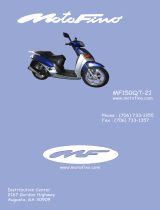 MotoFino MF150QT-21 Specification
MotoFino MF150QT-21 Specification
-
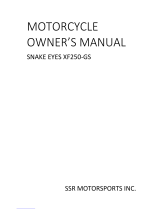 SSR Motorsports SNAKE EYES XF250-GS Owner's manual
SSR Motorsports SNAKE EYES XF250-GS Owner's manual
-
Knight WY50QT-10 User manual
-
S&S Cycle ReplacementEngine Instruction Sheet
-
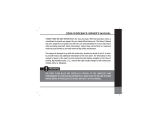 Big Dog Motorcycles 2006 K-9 Owner's manual
Big Dog Motorcycles 2006 K-9 Owner's manual
-
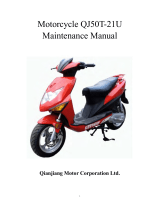 KEEWAY QJ50T-21U Maintenance Manual
KEEWAY QJ50T-21U Maintenance Manual
-
S&S Cycle Super E G Carb 1999-up bt Instruction Sheet
-
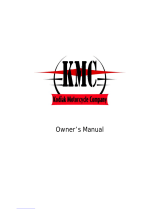 Kodiak Motorcycle Company AVENGER Custom Owner's manual
Kodiak Motorcycle Company AVENGER Custom Owner's manual
-
MOTO GUZZI California II Owner's manual
-
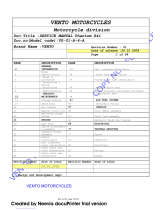 Vento Phantom R4i Service Maintenance Manual
Vento Phantom R4i Service Maintenance Manual





































































































